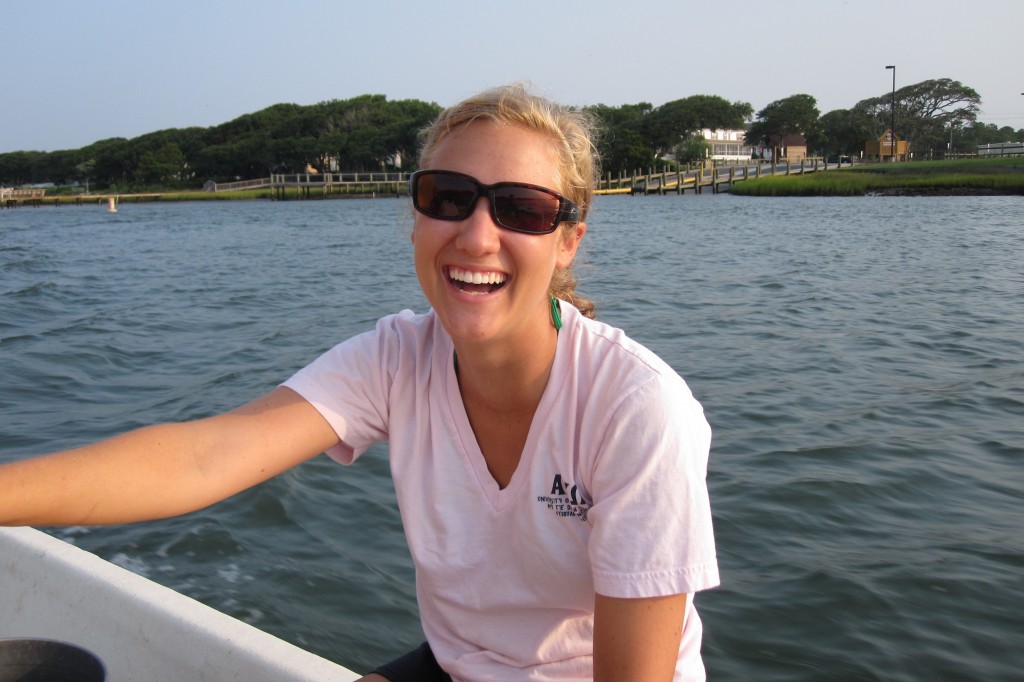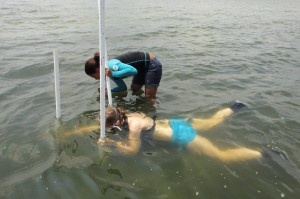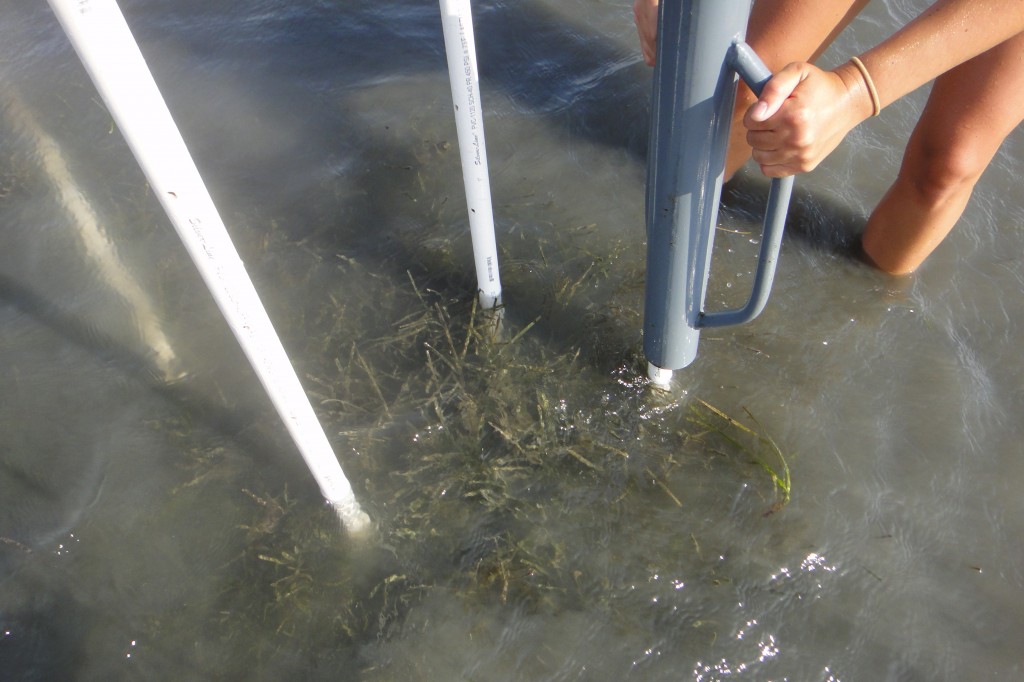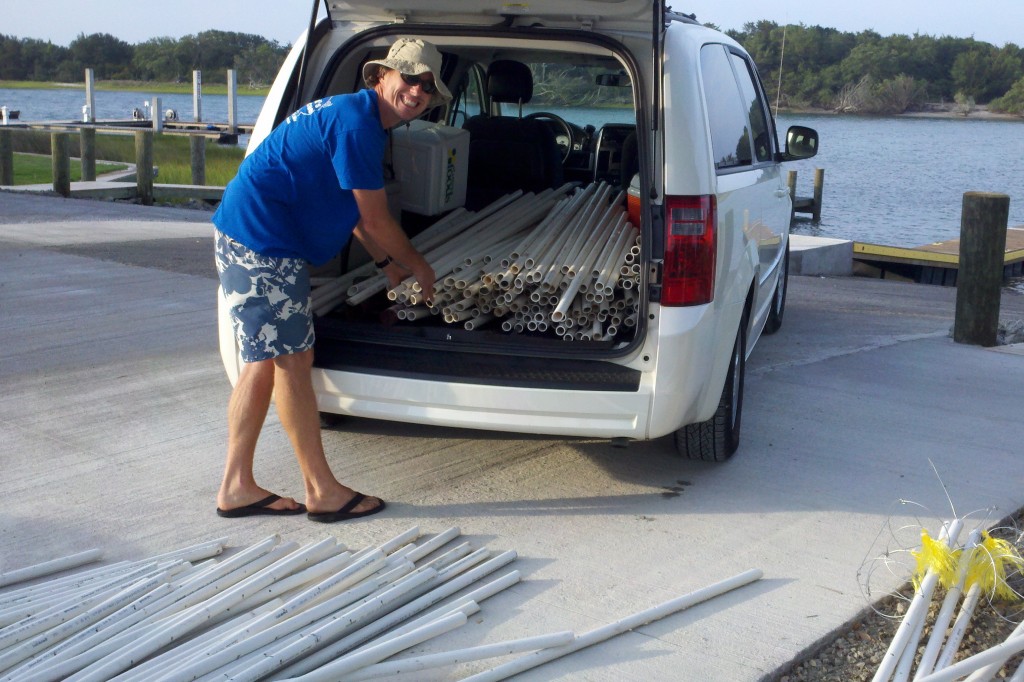A ZEN-like beginning in North Carolina
By Megan Gyoerkoe, UNC Chapel Hill undergraduate student
One morning, bright and very early, the North Carolina ZEN team packed up the truck and with all the necessary materials for the initial set up of all 40 experimental plots for our experiment. We arrived at our field site behind the Pine Knoll Shores Aquarium and the weather was absolutely beautiful, sunny and warm but with a cool breeze. The tide was calm and the Zostera seagrass beds were vast and lush. After briefly meeting with the aquarium staff our group got started right away, driving the 120+ poles needed to mark the experimental plots into the sediment. About half way through Pamela began to check some of the plots to make sure they had enough Zostera (we were aiming for a minimum of 80% cover). As it turns out what we thought were lush beds of Zostera were actually composed mainly of a different type of seagrass – Ruppia! You can understand that this is a problem given that we are working on the Zostera Experimental Network (ZEN) and not, well REN!
We had spent all morning driving poles into the sediment only to discover that we had been deceived by the seagrass. In disbelief that we could have made such a mistake, we checked and double-checked the plots. Then we went on an extensive Zostera hunt, searching endlessly for a hint of a healthy Zostera bed, swimming through the seagrass even under the threat of being hit in the face by jumping mullets! Turns out it was all in vain and it was back to the drawing board for the ZEN-NC site. What had been an extensive Zostera bed two years before had been replaced almost entirely by Ruppia and some Halodule seagrasses. We spent hours pounding in the poles only to pull them back up the next day.
Fortunately, Pamela, Erik and Rachel were able to work out the logistics for us to work at a new site nearby in Middle Marsh that was actually filled with beautiful, lush Zostera. Even though we had to re-set all of the poles, it turned out to be a wonderful, protected site that was a pleasure to work in.
Field research is definitely a category on its own; it is pleasantly unpredictable, entertaining, exciting and occasionally slightly torturous. I can without a doubt say that I learned so much more than I expected to this summer. I think most importantly, I learned that with field work you definitely need to be prepared for anything and up for doing everything.
Sometimes you will be given some PVC pipe, metal wire, mesh bags and zip-ties and will have to turn it all into a cage for keeping out predators. Sometimes your boat will get beached and you will be stuck till the tide comes in to rescue you. Sometimes you will get caught in the pouring rain. You may have to wrestle an American Eel or stand next to a young dogfish shark. Maybe you will get to have an urchin collecting competition or hunt for tiny crustaceans. You will potentially get pinched by a blue crab. You will most likely run out of zip-ties and chances are you will lose a bucket at least once. You might have to put 100 poles in a seagrass bed, only to take them right out again.
You just never really know what is going to happen any given day in the field. But, it is guaranteed that someone will come back bleeding (minor scrapes and bruises!) and everyone will have had plenty of laughs.
If I have any advice for anyone venturing into field research it is to:
1. Never forget an extra extra pair of scissors (you may not always need them, but you’ll always need them with you don’t have them)
2. Lather on the sunscreen
3. Always make time for Oreo breaks
Photos by PL Reynolds, C Pease






Comments are closed.